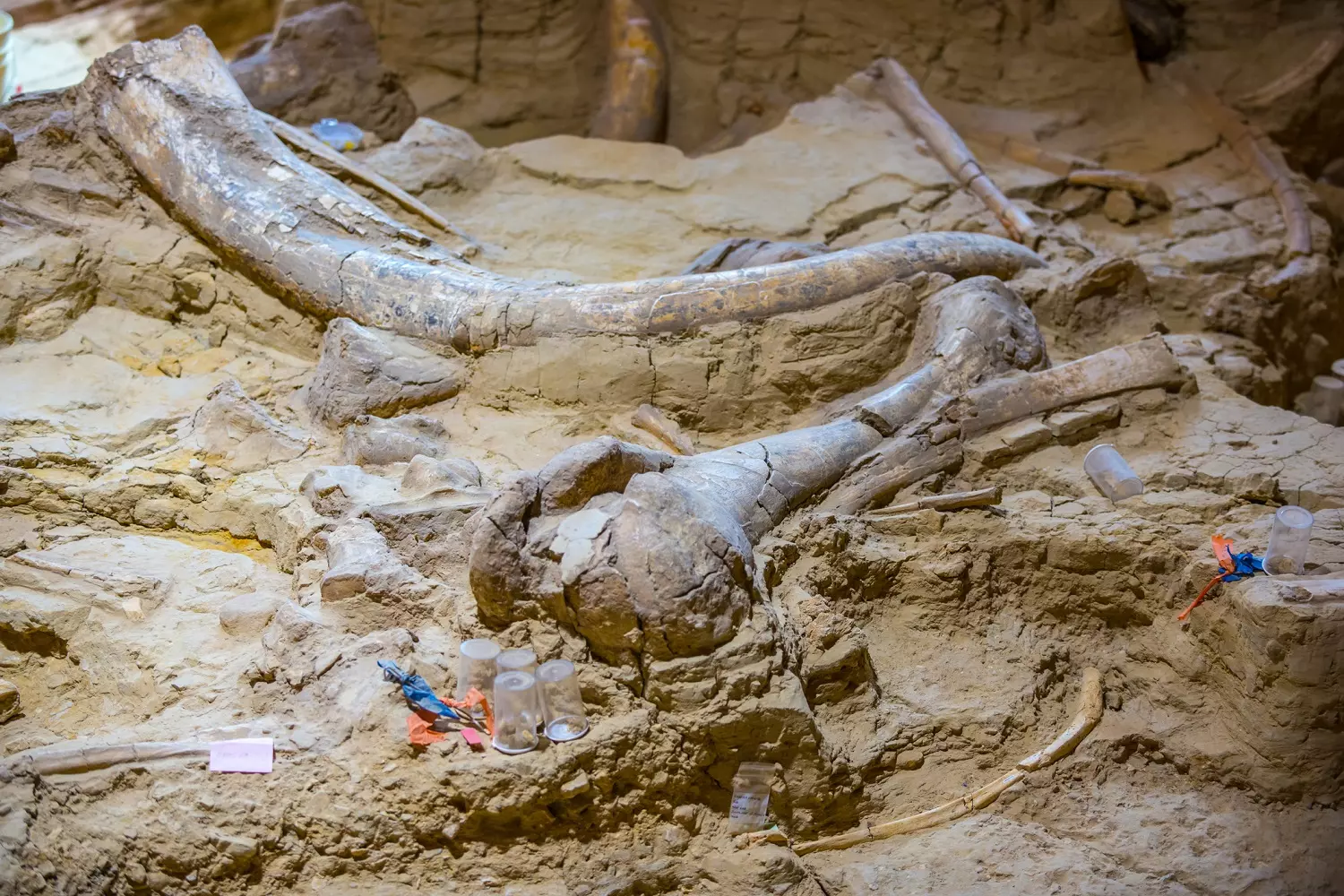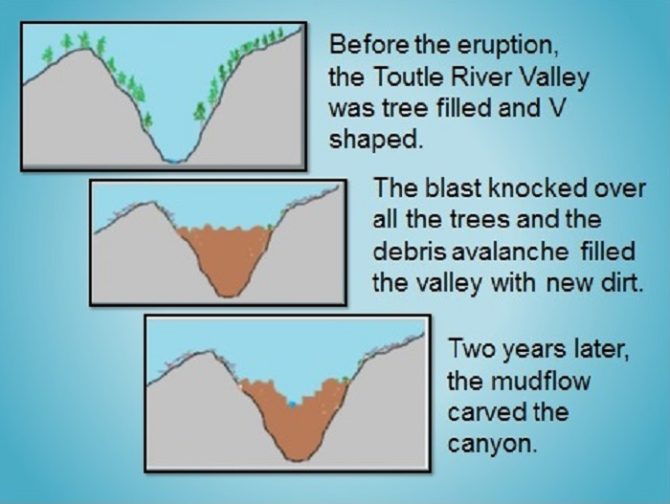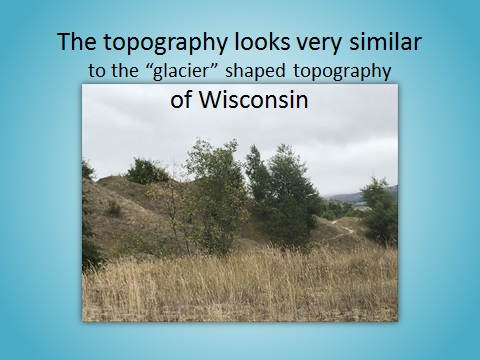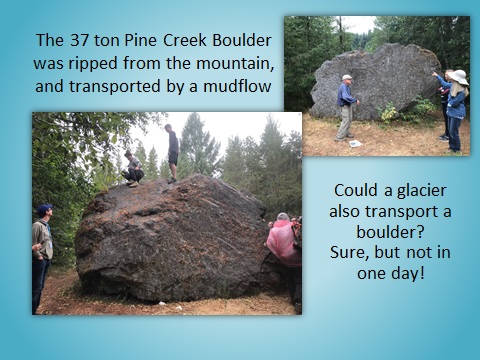[Originally published as The Demise of the Mammoths]
Sometimes, in the light of new discoveries, it is good to review our assumptions and make sure they are still in line with what we see in nature.
This is not to say we should reinterpret the Bible to fit with the ideas of modern science. God’s Word is true. When it seems like there is a contradiction between nature and the Bible, it is our interpretation of nature that needs to be adjusted.
It is a fact that there was a global flood
About 4,000 years ago, there was a global flood that killed all land-living, air-breathing life on earth — except for those on the ark. This is clearly founded upon what God has declared in His Word. We see in nature that local floods leave layers of mud, clay, and silt along with piles of debris in their wake. It is a safe assumption that the Flood did so too — on a grand, global scale.
God states in Genesis 7:11 that all the fountains of the great deep were broken, the windows of heaven were opened, and it rained for forty days and nights. These are the facts. Were the fountains deep within the land or beneath the sea? That answer would be an assumption.
However, there are parts of the creation model which is not founded on the Bible but on the ideas and models of modern science. These need to be held loosely and reexamined often.
For instance, nearly every creationist would say, “The Ice Age followed the Flood.” Is this a fact or an assumption? Yes, there are Bible verses that talk about snow, hail, and ice, but does this mean the Bible supports an ice age? Snow, hail, and ice are a part of winter.
The Bible actually says in Genesis 8:22, “While the earth remaineth, seedtime and harvest, and cold and heat, and summer and winter, and day and night shall not cease.” This verse could be interpreted as contradictory to the Ice Age idea.
According to the History.com editors
…popularization (of the idea of an Ice Age) is credited to 19th century Swiss geologist Louis Agassiz. Contradicting the belief that a wide-ranging flood killed off such megafauna as the wooly mammoth, Agassiz pointed to rock striations and sediment piles as evidence of glacier activity from a destructive global winter. Geologists soon found evidence of plant life between glacial sediment, and by the close of the century the theory of multiple global winters had been established.
This article gives a good summary of the secular view of earth’s commonly assumed five ice ages.
Agassiz was contradicting Henry H. Howorth and his extensive book, The Mammoth and the Flood, published in 1887.
The 19th-century geologist claimed that the only way to explain the demise and burial of the Siberian mammoths was with a massive flood followed by a sudden, extreme temperature change. He wrote his book not as support for the Bible and Noah’s Flood but as a case against Uniformitarianism. He actually believed that the Bible was just a collection of Hebrew stories and myths held on the same plane as the writings of other ancient people groups. He saw the huge amount of mammoth remains along with the many accounts of a massive flood in the ancient writings as being evidence for a massive flood. Byron C. Nelson included an excellent summary of Howorth’s work in his 1931 book The Deluge Story in Stone.
Agassiz believed it was glaciers, not a flood, that caused the demise of the mammoths and shaped earth’s topography (landscape).
In the 1980s, creationists began taking up the bandwagon for the Ice Age.
It seemed that there was much geological evidence, so they began modeling how it could not only fit within the Biblical timescale but how the Flood could have actually triggered an Ice Age. There have been many good articles and books written in support of this biblical view of the Ice Age following the Flood. Mike Oard, a meteorologist by trade and geologist by passion, is the leading voice. But there is some new evidence that needs to be considered.
It is time to address the elephant in the room: the mammoths in the ground
In 2017 a new fossil site was discovered in Russia. While studying the bed of mammoth bones on the cliff of the Chulym River, scientists were surprised to discover a bed of dinosaur bones beneath the mammoths. A thick stratum of clay separates the two bone beds.
Now the question must be asked, “Could the dinosaurs be from the Flood but the mammoths from the Ice Age? If so, then there should be signs of erosion marking a time gap between the two bone beds. In the Grand Canyon, creationists say the layers had to have been laid quickly due to the lack of erosion between strata. Shouldn’t the same hold true in Siberia?”
There is also a similar find, this time in Alaska. The cliffs of the Colville River contain an abundance of mammoth remains near the top with dinosaur fossils beneath. Scientists are trying to explain how dinosaurs could have survived so far north.
But actually, in the light of the Flood, fossils only show where the remains were buried, not where the animals had lived.
- During the Global Flood, islands of floating carcasses could have been swept along by wind and current for thousands of miles.
- As mountain ranges uplifted, there would have been avalanches that transported and reburied animal remains.
- As each mountain range pushed up through Flood sediment, avalanches would have rushed down the sides, filling the valleys with hummocky hills.
- The Flood waters draining off the land would have triggered mudflows which would have left the valleys wide and flat, thus U-shaped.
- The draining Flood waters would have also formed the sediment into giant ripples.
At Mount St Helens, mudflows and debris avalanches formed features that are identical to ice age features — but with avalanches, they form in minutes, not hundreds or thousands of years. Mount St Helens is not only a miniature picture of the Flood — it also shows how ice age-like features formed quickly from mudflows and avalanches.
In light of the discovered mammoth and dinosaur remains, consideration needs to be given to the possibility of the Global Flood causing the demise of the Mammoth.
In the light of Mount St Helens, there needs to be a reevaluation of the assumption of the Ice Age following the Flood.
Secular scientists have used the Ice Age to successfully replace the Flood — ice two miles thick instead of water one to two miles deep. They claim melting glaciers were the water source that caused the erosion that is so prevalent. They use Ice Ages to support climate change. The focus is on how climate change and man have caused so much extinction. It is time to challenge this.
Why do creationists accept the dinosaur fossils as being from the Flood but not the large mammals?Mammoth fossils are turning up everywhere, which would be expected if they had died in the Flood. Elephants are excellent swimmers, and even after death, their buoyant bodies float. They would have been some of the last animals to get buried and thus would now be found in the uppermost layers of the earth.
It would seem that a more logical model would assume the genetic sorting of the elephant kind into the six different types took place during the pre-flood years. Only two elephants were taken on the ark while all of the mastodons, mammoths, and other elephant types were drowned, buried, and fossilized.
After the Flood, those two surviving elephants were useful for carrying supplies and wood from the ark to the new settlements. The descendants of those two continued to be useful and traveled with the people groups as they dispersed from the Tower of Babel into Africa and Asia. Over time, many became wild in their new locations.
Personally, I believe…
“Fossils came from Noah’s Flood,
A sign of God’s judgment sealed in mud.
Written upon earth’s pages of stone,
Not in ink, but written in bone.”
And that would include the mammoth bone.










